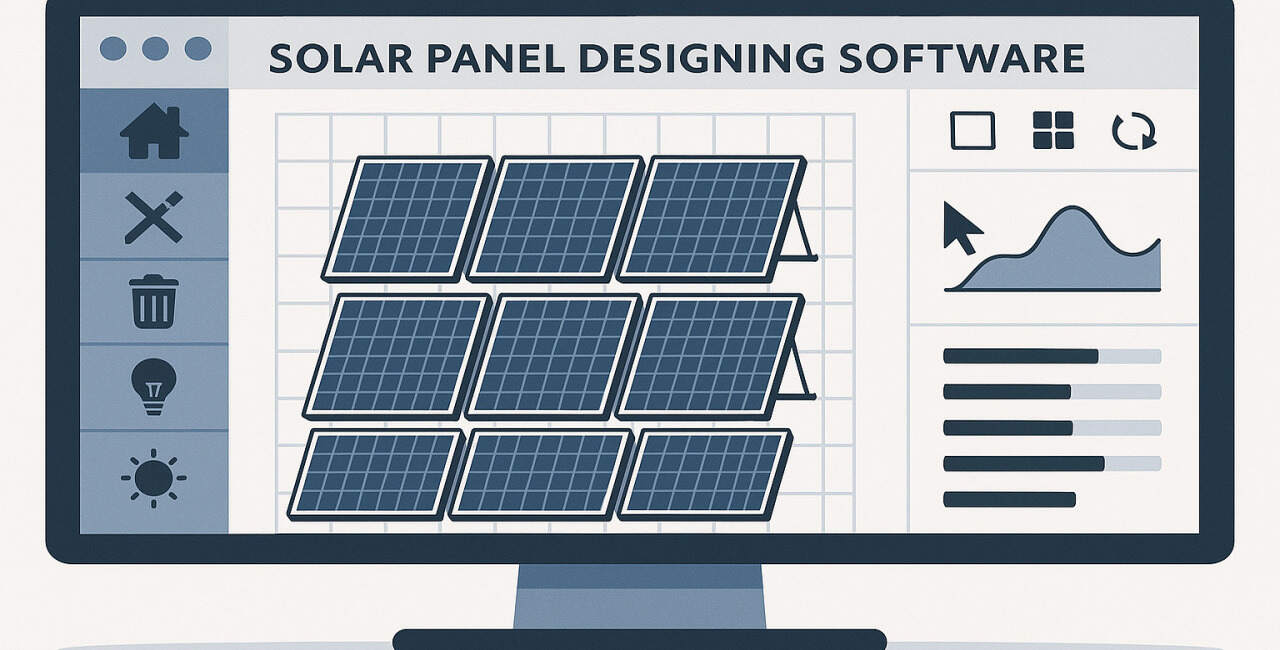
Designing solar projects has become more advanced now, and there’s no secret behind it—everyone knows about solar design software. For today’s solar professionals and newbies, solar design software tools are more than just design aids—they’re complete solutions for all the manual work that comes with designing a solar panel system. Thanks to this technology and the right platform by your side, you can do much more than just design a solar panel system.
So, which solar design software should you choose in 2025? Let’s break it down. This guide will cover what solar design software is, the benefits it offers, and a roundup of the top solar design software tools available this year.
Solar design software is an advanced digital tool used to plan, design, and optimize photovoltaic (PV) systems for residential, commercial, and utility-scale solar projects. It simplifies the entire design process from site assessment to performance forecasting, helping solar professionals deliver more accurate results fast.
With solar design software, you can:
In short, solar design software turns complex technical work into streamlined workflows that boost both project accuracy and sales success.

Before we dive into the list, here are some of the biggest reasons solar businesses rely on these platforms:
Modern solar design platforms cut project turnaround times dramatically. Remote site assessments and automated panel layouts mean fewer physical site visits, faster designs, and shorter sales cycles.
Precise layouts reduce material waste and design errors. Most software options have a subscription fee but the savings from avoiding mistakes and wasted time easily outweigh the expense.
Clients like to know what the finished project will look like before making a commitment. Solar design software assists in generating high-quality visual solar bids with realistic 3D views and financial advantages. This builds trust and seals deals quickly.
Staying compliant with local codes and industry standards is easier with integrated tools that flag design errors and help create permit-ready documentation.
Here are the top-rated platforms solar professionals are using this year:
A complete platform for solar design and business operations, ARKA 360 is the best solar design software tailored to installers who want speed, accuracy, and streamlined sales tools.
Highlights:
Best for: Residential and commercial installers who want design + proposal + permitting in one platform.
Pricing: Tiered plans for different business sizes.
G2 Rating: 4.4 / 5 (85 reviews)
A cloud-based leader in solar design, Aurora is widely used for its balance of technical depth and sales support.
Highlights:
Best for: Solar contractors looking for an all-in-one design and sales solution.
Pricing: Subscription-based, with multiple tiers.
G2 Rating: 4.7 / 5 (117 reviews)
HelioScope combines user-friendly design with detailed performance modeling, making it ideal for commercial-scale projects.
Highlights:
Best for: Developers and engineers handling larger commercial projects.
Pricing: Starts at $159/month, with Pro and Enterprise options.
G2 Rating: 4.5 / 5 (19 reviews)
A unique player in the market, OpenSolar is a free platform that doesn’t skimp on features.
Highlights:
Best for: Small to mid-sized installers seeking a free but powerful design tool.
Pricing: Free with no seat or design limits.
G2 Rating: 4.6 / 5 (3 reviews)
Pylon merges solar design with CRM functionality, offering a platform that helps both engineers and sales teams.
Highlights:
Best for: Growing solar businesses that need both design and customer management tools.
Pricing: Pay-as-you-go, with enterprise options available.
G2 Rating: 4.3 / 5 (2 reviews)
PV*SOL is a simulation-heavy tool trusted by engineers and architects for its detailed energy modeling.
Highlights:
Best for: Professionals needing in-depth analysis and highly accurate forecasts.
Pricing: License-based, with multiple tiers.
G2 Rating: 4.3 / 5 (10 reviews)
PVcase offers AutoCAD-based design solutions for both large-scale ground-mounted projects and commercial rooftops.
Highlights:
Best for: Developers and engineers working on large or CAD-driven projects.
Pricing: Subscription-based, contact vendor for details.
G2 Rating: Highly rated, winner of G2’s 2025 Best CAD Software award.
A long-time industry standard, PVsyst is trusted globally for its accuracy in PV system modeling.
Highlights:
Best for: Engineers and researchers requiring advanced technical detail.
Pricing: License-based with academic/commercial tiers.
G2 Rating: 4.7 / 5 (17 reviews)
RatedPower focuses on utility-scale projects with its automated design and optimization features.
Highlights:
Best for: Utility-scale developers working on large commercial PV projects.
Pricing: Subscription-based, vendor provides tier details.
G2 Rating: Strong reviews highlighting speed and accuracy.
Designed with sales teams in mind, Solargraf merges proposal creation with design and permitting.
Highlights:
Best for: Residential installers prioritizing sales enablement.
Pricing: From $2,799/year for two users and 240 projects.
G2 Rating: 4.4 / 5 (4 reviews)

Investing in the best solar design software will make a huge change in how smoothly your business runs. These digital tools are built to give you an edge—from creating accurate system layouts to cutting down costs and speeding up approvals. Whether you’re a part of growing solar design companies or managing large-scale installations, choosing the right commercial solar design software can greatly enhance your workflow efficiency.
Every company is different, and what works for a small residential installer might not be the best fit for a large commercial developer. That’s why it’s worth exploring a few of the options on this list to find the commercial solar design software that suits your business best.













